Cows are one of the most important animals in milk production worldwide. Since ancient times, they have been bred and selected to maximize their milk production capacity, resulting in a variety of breeds specialized for this purpose. In this article, we will explore the five best dairy cow breeds for producing milk, highlighting their characteristics, origins, and contributions to the dairy industry.
Prefer to listen to this article? Click the play button below and enjoy our podcast!
Best Dairy Cow Breeds
1. Holstein-Friesian
The Holstein-Friesian, known as the Holstein, is the Queen of milk. This breed originated in the Netherlands, around the 1850s and comes from the province of North Holland and Friesland and Schleswig-Holstein, in northern Germany, which is why it is often called the Holstein cow. Interestingly, in Europe there is a tendency to call this breed Friesian while in America, they call it Holstein-Frisia.
It is characterized by being a breed of imposing size, with females weighing between 600 and 700 kg and measuring 1.45 meters on average, while bulls weigh between 900 and 1200 kg and can reach 1.52 meters in height. Cows have a voluminous, well-watered udder, ideal for milk production. This breed is also characterized physically by having two types of coats: the most common is black and white spotted (dominant gene) and the other, rarer, red and white spots (recessive gene). Other characteristics of this breed are that it adapts better to cold and mild climates. It is also known for its docile temperament and easy handling.
The Friesian breed has a large udder due to its dairy activity, however it is more susceptible to mastitis and reproductive problems. The amount of milk that a Holstein-Friesian cow produces depends on several factors, including the environment and the type of nutrition. In other words, if the diet is based on forage, this breed produces four to five thousand liters of milk per lactation (305 days); If the feed is mostly concentrated, the cow produces ten thousand to twelve thousand liters of milk per lactation (305 days). Therefore, the reasons for the fame of the Holstein breed are unparalleled milk production, greater yield in relation to feed costs and exceptional genetic merit.
.jpg?width=749&height=499&name=iStock-1198993164%20(1).jpg)
2. Jersey
Originating from the island of Jersey, in the English Channel, it is characterized by being smaller than the Holstein breed, its coat varies from light brown to dark brown tones and these cows are easily recognized by their large and expressive eyes, black snout and a frontal slit. It has an excellent conformation to support the udder and its limbs are light and thin. Thanks to its lightness, this breed adapts better to unkempt areas. It is a docile cow and easy to handle. The Jersey breed stands out for its high quality of milk produced and its fat and protein content and has 25% more calcium than average. In other words, despite its milk production being lower than the Holstein breed (a Jersey cow can produce up to ten thousand liters of milk per lactation when very well adapted and four to five thousand liters of milk per lactation in tropical conditions), the quality of milk is higher, having around 4.84% butterfat and 3.95% protein. For this reason, the Jersey breed is widely used for the production of high-quality dairy products such as cheese, ice cream and butter. This higher quality milk is due to conversion with a pasture and forage based diet. Furthermore, the Jersey breed adapts very well to different types of soil and climates, being very resistant to moderate heat. It should also be noted that this breed is useful for both dairy and meat production.
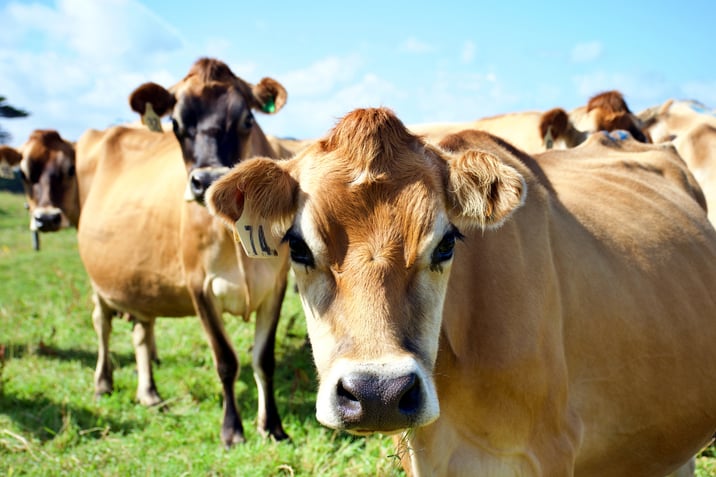
3. Guernsey
The Guernsey breed, like Jersey, originates from the English Channel Islands, specifically the island of Guernsey. This breed first became known as a distinct breed around the 1700s.
The Guernsey is characterized by its high-quality milk production, adaptability and longevity, as a cow of this breed still gives birth at fifteen years of age.
As for its coat, it varies from shades of red and white to darker shades of brown. A unique characteristic of this breed of cow is that it produces milk with a higher beta-carotene content, which gives the milk a typical golden tone, hence the name “Golden Guernsey” cows. Milk is rich in protein and has a distinct flavor. These characteristics make the Guernsey breed a popular choice among dairy producers looking to differentiate their products in the market.
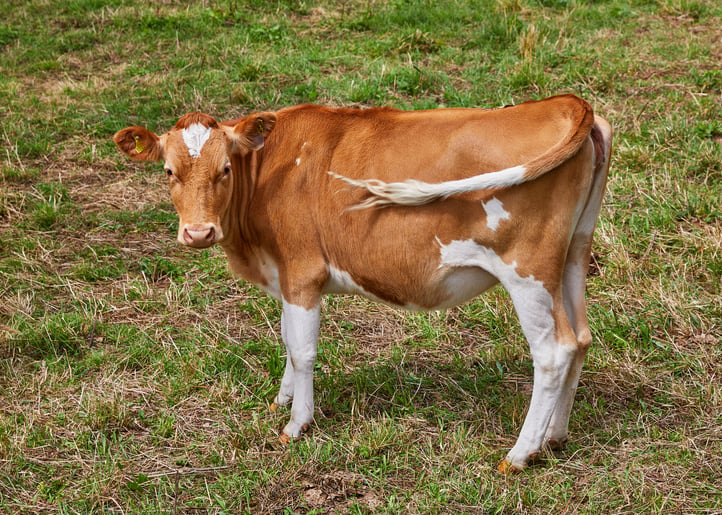
4. Brown Swiss
The Brown Swiss breed, as the name suggests, originated in Switzerland and is a breed of dairy cow known for its resistance and ability to adapt to a variety of environments. Therefore, this breed is valued both for its consistent milk production and its ability to remain healthy in challenging conditions. Their coat is generally brown and this breed is also recognized for its robustness and longevity.
The milk produced by Brown Swiss cows is known for its balance between fat and protein content, making it suitable for a variety of dairy products, especially cheeses.
Furthermore, this breed is praised for its feed efficiency, efficiently converting feed intake into milk production, which makes it an economical choice for many producers.
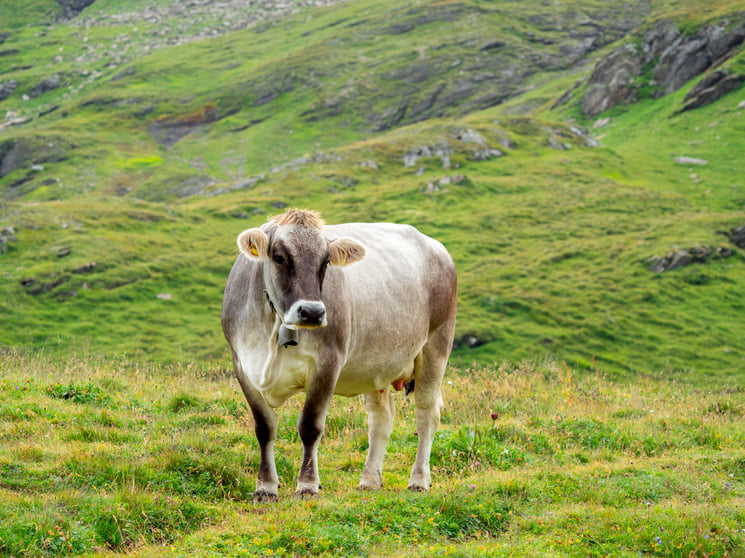
5. Ayrshire
The Ayrshire breed originates from Scotland and became a well-established breed in 1812.
The Ayrshire is a robust cow, with a red and white coat and known for its distinctive and alert head, and its production in grazing systems is very good. This breed is valued for its reduced somatic cell count, efficient milk production and milk quality. Three other characteristics stand out: the Ayrshire breed is easy to calve, has good longevity and is free from genetic diseases. Therefore, Ayrshire milk is designated as “the ideal milk to drink” and is known for its balance between fat and protein content. This breed is recognized among dairy producers looking for efficient and adaptable cows capable of thriving in a variety of conditions.
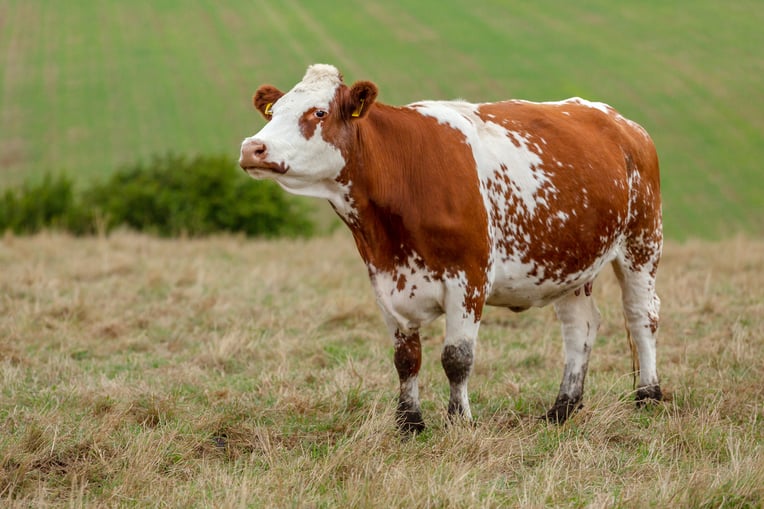
Conclusion
Cows from these five breeds represent the core of the dairy industry worldwide. Their distinctive characteristics, including milk production efficiency, quality of milk produced and adaptability make them popular choices for producers looking for reliable, high-quality dairy cows.
References
“The Best Breeds of Dairy Cows.” 2023. [Online]. Available: https://www.morningagclips.com/the-best-breeds-of-dairy-cows/
Mcclatchy Creel, K. (2021). NAME THAT COW: THE 6 GREAT DAIRY BREEDS. https://www.dairydiscoveryzone.com/blog/name-cow-6-great-dairy-breeds
9 Highest Milk Producing Cow Breeds for Your Dairy Farm. (2023). https://www.youtube.com/watch?v=xWdaLMrzD_Y
Top 10 Highest Milk Producing Cattle Breeds in All Over the World. (2015). In ABLTechnology. https://abltechnology.wordpress.com/2015/06/12/top-10-highest-milk-producing-cattle-breeds-in-all-over-the-world/
Holstein Breed Characteristics. (n.d.). In Holstein Association USA. https://www.holsteinusa.com/holstein_breed/breedhistory.html
Jersey Cattle - Characteristics, Origin, Price, Uses. (2024). https://www.roysfarm.com/jersey-cattle/
Guernsey. (2022). In The Cattle Site. https://www.thecattlesite.com/breeds/dairy/21/guernsey
Brown Swiss Cattle: Characteristics, Origin, Uses. (2023). In ROYS FARM. https://www.roysfarm.com/brown-swiss-cattle/
Ayrshire. (2022). In The cattle site. https://www.thecattlesite.com/breeds/dairy/19/ayrshire/
Huson, H. J., Sonstegard, T. S., Godfrey, J., Hambrook, D., Wolfe, C., Wiggans, G., Blackburn, H., & VanTassell, C. P. (2020). A Genetic Investigation of Island Jersey Cattle, the Foundation of the Jersey Breed: Comparing Population Structure and Selection to Guernsey, Holstein, and United States Jersey Cattle. Frontiers in Genetics, 11. https://doi.org/10.3389/fgene.2020.00366
About the author
Ana Vanessa Dias Sousa (Researcher FeedInov CoLAB)
With a degree in Veterinary Sciences from the University of Trás-os-Montes and Alto Douro, she worked for five years as a field veterinarian and in a pig and cattle feed factory. She worked in the pharmaceutical industry as a sales manager and technical support for pigs, cattle, rabbits and poultry in mainland Portugal and the Azores. She is currently at Feedinov Colab as a Researcher in the One Health Department.
Explore author’s articles


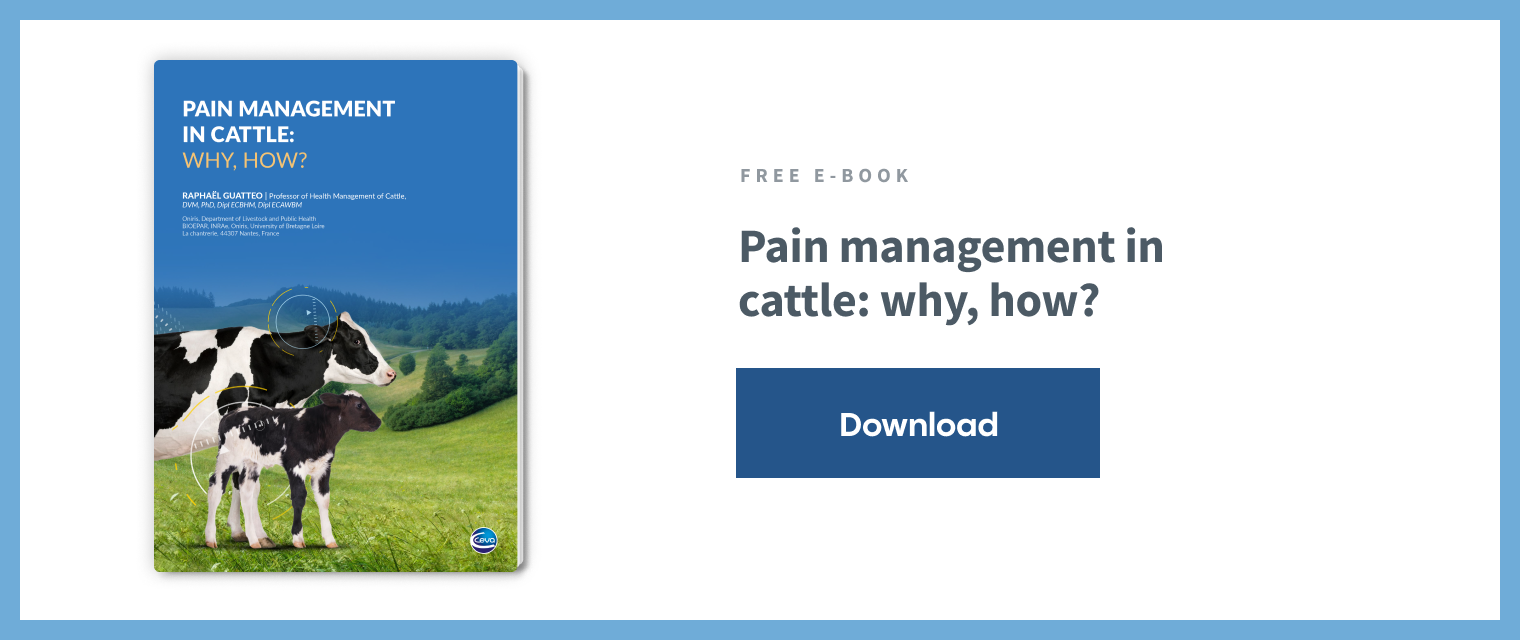
Leave your comments here